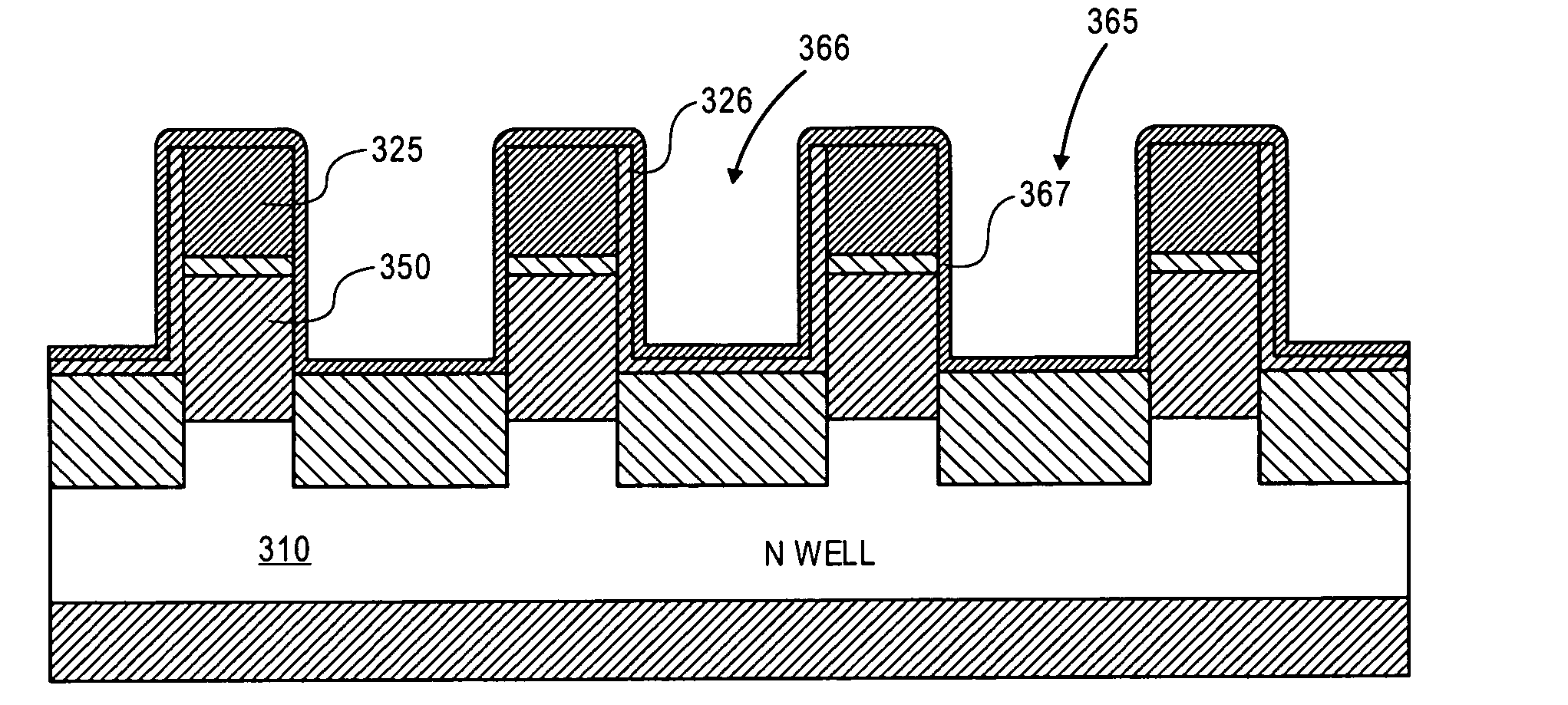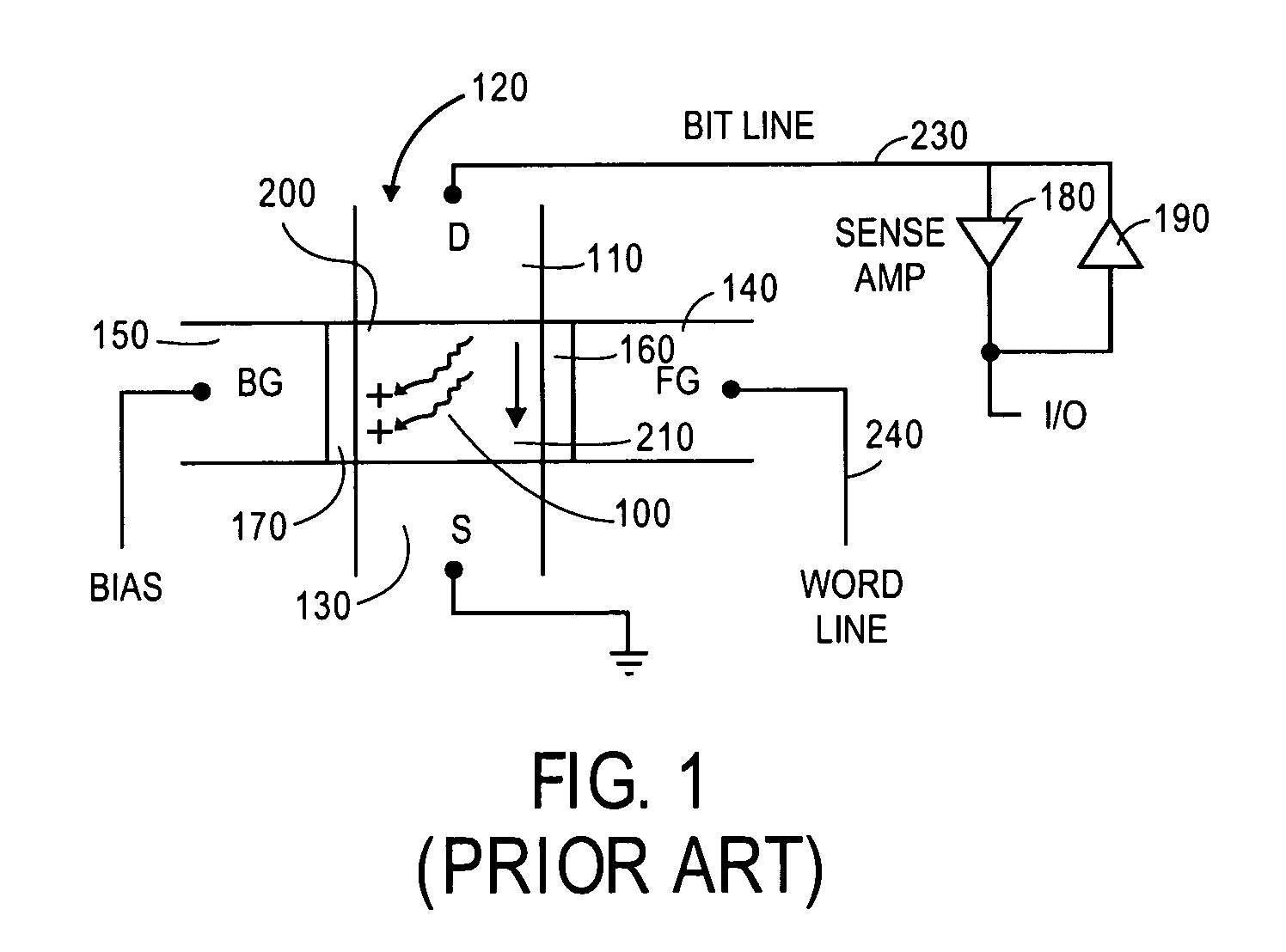Floating body memory cell having gates favoring different conductivity type regions
a floating body memory and gate technology, applied in the direction of semiconductor devices, electrical equipment, transistors, etc., can solve the problems of low efficiency, difficult to fabricate structures, and relative high voltage required on the back ga
- Summary
- Abstract
- Description
- Claims
- Application Information
AI Technical Summary
Benefits of technology
Problems solved by technology
Method used
Image
Examples
Embodiment Construction
[0040]In the following description, a memory and method for fabricating the memory is described. Numerous specific details are set forth, such as specific conductivity types, to provide a thorough understanding of the present invention. It will be apparent to one skilled in the art, that the present invention may be practiced without these specific details. In other instances, well known processing steps and circuits have not been described in detail, in order not to unnecessarily obscure the present invention.
Floating Body Cell Operation and Prior Art Devices
[0041]A single memory cell is shown in schematic form in FIG. 1. A portion of a semiconductor line, body or fin 120, formed on an oxide layer (such as BOX 250 of FIG. 2), and etched from, for example, a monocrystalline silicon layer is illustrated. The body 120 includes a pair of spaced-apart, doped regions 110 and 130, disposed at opposite ends of the body thereby defining a channel region 100. In one embodiment, the channel r...
PUM
 Login to View More
Login to View More Abstract
Description
Claims
Application Information
 Login to View More
Login to View More - R&D
- Intellectual Property
- Life Sciences
- Materials
- Tech Scout
- Unparalleled Data Quality
- Higher Quality Content
- 60% Fewer Hallucinations
Browse by: Latest US Patents, China's latest patents, Technical Efficacy Thesaurus, Application Domain, Technology Topic, Popular Technical Reports.
© 2025 PatSnap. All rights reserved.Legal|Privacy policy|Modern Slavery Act Transparency Statement|Sitemap|About US| Contact US: help@patsnap.com



